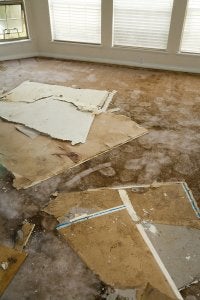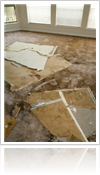 Because the area has so many older houses, homeowners in and near Baltimore are seldom surprised to find mold in their basements. But this harmful fungus is just one of the many problems you can experience when your basement is leaky . Basement water damage can cause extensive, near-catastrophic damage that is difficult and expensive to repair. Walls can rot, and if water gets into cracks in concrete or stone, it can compromise the structural integrity of your home, including the foundation. Besides mold, other signs of water damage include:
Because the area has so many older houses, homeowners in and near Baltimore are seldom surprised to find mold in their basements. But this harmful fungus is just one of the many problems you can experience when your basement is leaky . Basement water damage can cause extensive, near-catastrophic damage that is difficult and expensive to repair. Walls can rot, and if water gets into cracks in concrete or stone, it can compromise the structural integrity of your home, including the foundation. Besides mold, other signs of water damage include:
Discolorations on the Basement Ceiling
If you are unsure whether or not your home has a waterproof basement, go downstairs and inspect the exterior walls and the ceiling. Turn on all the lights and check the color of the paint or wallpaper. Splotches of discoloration or fading are telltale signs that you have leaks, and that water is seeping into the walls and foundation of your home.
Bumpy Textures on the Walls
Beneath the paint or wallpaper, the walls in your basement may be drywall or wood-framed, especially if you have a newer home. When you have inadequate basement waterproofing, the walls can absorb water, which causes them to swell and contract unevenly, leaving behind bumps and pockmarks. Run a gloved hand along the wall, gently, to check for smoothness.
Crumbling Wood Details
Wooden details, such as baseboards, crown molding, and window frames, are especially susceptible to water damage and will begin to rot very quickly if they are near the source of leaks. Look and feel for damp or crumbling wood to reveal water damage in the basement or attic.
Musty Smells and Damp Odors
If you scrub the mold from your walls, but still notice a musty smell or any type of unpleasant odor a few days later, you likely have a leak and water damage somewhere in the basement. Only professional mold remediation can totally eradicate this harmful fungus. The smell might also be coming from rotting wood in window frames or other structural elements of your home.

